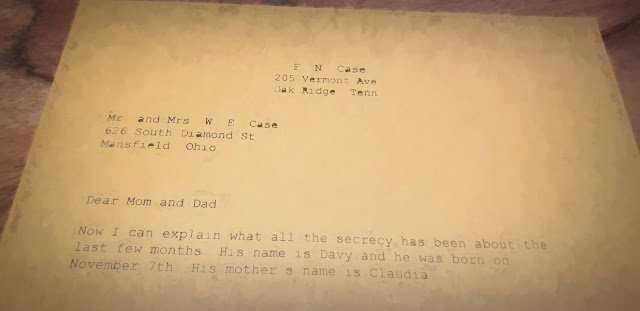Leaving Secret City
A blog of sorts, by a child of the Manhattan Project.
PAGES:
Wednesday, September 7, 2022
Friday, April 29, 2022
1934 - 1937 - Forrest Neil Case's Story - Madison High School
Ambition: To be a professor of Chemistry.
By 1934, apparently no longer trapped by the glaciers engulfing old Woodville school, Neil Case now found himself in Madison High School where he was the Secretary-Treasurer of his class as well as the Manager of the football team. In 1935 he was once again Manager of the football team but had made greater strides in politics. He was now the President of the Sophomore Class.
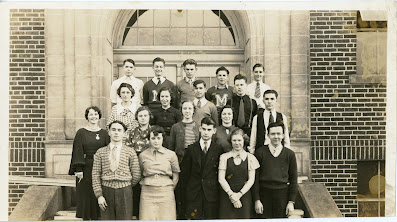 |
| The cast of "Everybody's Crazy" Forrest Neil Case is front row, center. Kathryn Johnson is standing behind Neil's left shoulder |
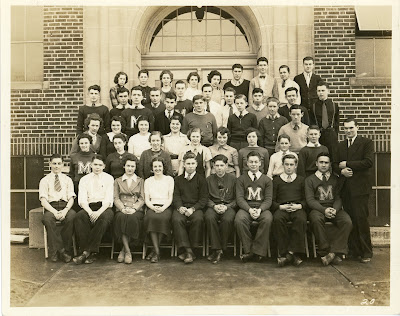 |
| 1936 Madison High School Science Club |
Young Mr. Case took the club's purpose to heart for then, as well as throughout the rest of his life, he was definitely an "applied" chemist and not a theorist. For example, he and his brothers eagerly picked the apples from the trees in the family orchard for making "cider" in the cellar. Their mother was an absolute teetotaler who in her youth had warned young men seeking to court her that "lips that taste wine shall never taste mine". The boys assured their mother that the cider they were making was of the non-alcoholic variety. In fact, they always set aside a portion of the juice for surreptitiously distilling into "the real thing".
 | |
|
 |
| 1937 Madison High Science Club |
 |
| NEIL CASE "Physically fit and mentally able." |
Back: F. N. Case
Saturday, April 16, 2022
Letter to Cousin Martha - Part One "Granny Osborn's Reading List"
12/17/2018
Greetings Cousin Martha,
I hope these Holidays are finding you, ..., and all your loved ones happy and healthy. I am enclosing a letter from Nancy Romans Osborn to my mother dated Jan 3, 1961. I thought you might like to have a copy because in it she briefly mentions your parents, you, Tommy, and other family members. The baby referred to would be Carl Osborn, son of Ellis Osborn and Elizabeth Peden Osborn. The last time I saw Carl he was very young and still very red-headed. Just like Columbus Allen was I suppose, although I have no memory of him.
I am enclosing copies of the letter and the newspaper article Nancy refers to in the letter. I am also enclosing a typed version that is easier to read. In the typed version I did not edit the original letter, just printed it as it was, spelling mistakes and all. I love it just the way it is. I found the part about the moonshine stills in Aunt Agatha's house both amusing and enlightening. Here's why:
"Granny", as I called Nancy Osborn when I was a boy, always impressed me. Mom respected her a lot, as did Ellis, Elizabeth, and the children in their household. So naturally, I respected her too. I was even maybe a wee bit scared of her. She moved slowly and didn't say much to me but when she did she was kind and even laughed, which helped set me at ease. She admonished me to read two books in life if I read no others. They were the Holy Bible, which she presented me a copy of, and another book that she explained would help me better understand Alabama and its people. That book was "Stars Fell on Alabama" by Carl Carmer. I promised her I would read the Bible during the coming year and if I could find a copy of Mr. Carmer's book I would read it too.
As soon as we returned home to Oak Ridge I set about reading the Bible that Granny had given me. At first, it went pretty well with the Book of Genesis. As I recall, I even made it through the Book of Exodus. After that, the going got tougher and more bewildering until finally I caved in and gave up altogether. I had failed. Furthermore, our library in Oak Ridge did not have a copy of "Stars Fell on Alabama" so I couldn't read that book either. I was a double failure.
The next year as we drove back down to Alabama, I sat in the back seat of our car praying the whole way that Granny would not remember my promise to read the two books, especially my promise to read the really important one, the Holy Bible. When we arrived at uncle Ellis' house we were welcomed with lots of hugs and kisses and "law, law, how little Davy has grown" etc., from everybody. As we all sat down in the living room I tried to hide behind Wallace hoping Granny would not notice me. However, destiny, bad luck, punishment for all my sins, or whatever you want to call it, ruled the moment. The first words out of Granny's lips were "Davy boy ... did you read the Bible I gave you?" and as she spoke every head in the room turned towards me and waited in silence for my answer. We had been in the house less than five minutes.
I wanted the earth to open and swallow me up. I knew it was pointless to pray for the angels to swoop down and carry me up to Heaven because there was no place there for little boys who break promises to their Grannys. There was no place to run. Everybody was waiting for my answer. I did the only thing I could think of. I lied. "Yes Granny," I said looking down at my sneakers. "Did you read all of it?" she asked. Clearly, I realized, Granny was not born yesterday. She wanted details. "Uh, not all of it yet Granny," I said with a gulp, hoping that our conversation would stop right there. I could feel my face getting redder and redder. "How much did you read Davy?" she asked.
(Years later when reading about the Spanish Inquisition I would think back to that day with Granny Osborn and sympathize with those poor, wretched heretics, about to face the inquisitors of the Holy Roman Catholic Church.)
"The first part Granny. The part about the creation of the world and the Garden of Eden and Adam and Eve and the serpent and the snake ... ". Granny smiled and stopped me right there. "It's a hard book for a little boy to read all by himself." she said. "You done good so far. It's ok to skip around and read the parts you like. God loves you and likes that you are trying." That's when I fell in love with Granny and knew that she truly was wise and why everyone respected her so. It was going to be a good trip to Alabama after all.
It took me another fifty or so years before I found a copy of the other book. A used book store opened up in Sevierville, with two floors of bookshelves. The number of books was vast, but the selection was poor, but I did find a few gems here and there, including a couple of nice hardback volumes by the Brazilian author Jorge Amado. But way too many of the books were cheap paperback romance novels with pictures of muscular men without their shirts staring down at scantily clad women sprawled out in brass beds with expressions of both fear and unbridled desire on their faces. "Ugh", I thought "this place ought to do pretty well in Sevierville." Then, as I was about to leave, there it was ... on a high shelf calling out to me without a sound but beckoning me to look upward... a hardback in a nondescript beige and black dust cover bearing the words "Stars Fell on Alabama - Carl Carmer". "Holy moly" I exclaimed silently inside my stunned mind. "Can it be true?"It was. I bought it at once not even looking at the price. "It's a first edition," the store owner told me as if justifying the price. "Great" I replied, "That's great." (It was $20.00 bucks) I've never been happier with a book purchase. It was all Granny said it would be and more. The chapters in the section entitled "Part II. In the Red Hills" painted a picture of life in the North Alabama hill country in the 1930s that I would learn later was the life of my Mom's people. I still have the book. It is one of my most valued treasures. At least I kept that part of my promise to Granny Osborn. Redemption at last!
To be continued...
Saturday, November 20, 2021
Welcome.
Leaving Secret City is a non-fiction narrative derived from memories, documents, photos, and whispered secrets. The memories are my own. The documents and photos come from various sources which I cite. The events related here are as factual as I can make them, but sprinkled here and there may be a few educated guesses. I will clue you in when that happens. As for what this website is "about," I will leave that for you to unravel. Navigation is a mix of conventional, unorthodox, and hidden. Good luck.
Wednesday, June 30, 2021
Au Family Photos
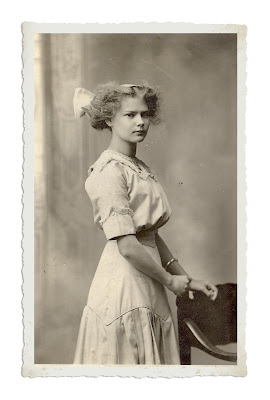 |
| Mary Elizabeth Au, circa 1908, Mansfield, Richland County, Ohio |
Wednesday, April 18, 2018
The Death of Max
On 18 April 1978, I received a phone call from Dad. Uncle Max had killed himself. Earlier that morning, Max was to meet with attorney George Knell at the office of Knell & Freehafer before they would walk the short distance to the Richland County Courthouse. Some weeks before, Max's wife Mary had filed for divorce after enduring a thirty-year marriage that had produced no children and countless arguments. That morning the court would render the final verdict in the matter. When Max did not show up and did not answer repeated attempts to contact him by phone, the firm sent a young law clerk over to my Grandmother's house to find him.
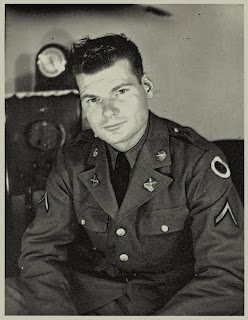 |
| Russell Maxton Case |
Max lived with Grandmother during the pendency of the divorce proceedings while Mary continued living in their marital home. Three days before that morning, Grandmother, and presumably Max, marked her 85th birthday. At her age, walking up and down the stairs had become difficult. So now she slept downstairs. Max slept alone on the second floor in a room Grandmother called "the boys' room." The reference was to Grandmother's brothers who had slept there as children. Her boys, save for Wendell, had never lived in that house. Nonetheless, the room's closets contained items that had belonged to them, brought there by Grandmother when she moved there after the war. Max's army uniform with his 37th "Buckeye" Infantry Division patch was among them.
The "boys' room" was my room during my summer stay there in 1956. As an eight-year-old, I regarded the uniform in the closet with reverence and awe. It was heavy and smelled of wool, and I viewed it as something of importance, something to be treasured. The shoes on the floor were still spit-shined. It was the uniform Max had on when he came home from the war. He wanted to look outstanding for his folks and Mary. In his letters home, he never described the war in the Pacific. During periods of combat operations when there was no time to write home, he would apologize for not having written sooner, adding, "we've all been pretty busy here lately." For his homecoming, he wanted to look his best, happy and in good health. Like a lot of GIs, he avoided talking about the war except in general terms. The details he kept locked up somewhere deep inside. Twenty-eight-year-old Russell Maxton Case, who walked off the ramp of the USS General William Mitchell onto the streets of San Fransisco on Thursday, 6 December 1945, was not the same lad drafted into the Ohio National Guard in 1941.
When the law clerk arrived, he stood at the bottom of the stairs and called out to Max several times. When he got no reply, he climbed the stairs and entered the "boys' room." Scattered on Max's bed and the surrounding floor were tens of thousands of dollars. The money was Max's life savings, which he had withdrawn from his savings account the day before. Max lay face-up on the bed, amid the cash, in a pool of blood. He had been a parole officer and owned a snub-nosed revolver. Earlier that morning, Max had pressed its muzzle beneath his lower jaw, pointing upward through his head, and pulled the trigger.When the law clerk discovered the scene, he ran downstairs and called for an ambulance. Soon after, the ambulance arrived, as did the police. The ambulance attendants removed Max's body, the police took possession of the pistol, spent bullet casing, and cash, and everybody left the blood-soaked bedding for Grandmother.
Back at the courthouse, everything had changed. Mary was no longer Max's wife; she was his widow. The court dismissed the divorce case. I suppose that the cash removed by the police was eventually turned over to Mary, or paid into his estate, pending administration. The same for the pistol.
Dad and I arrived at Grandmother's house the following day. We found her alone, seated in a chair at the kitchen table, weeping. Too weak to climb the stairs, she never saw the scene that greeted the law clerk. She just waited for us to come up from Tennessee. We tried to comfort her and listened to her account of what happened. She thought she heard a noise upstairs but was unsure since she was so hard of hearing. She did not realize it was a pistol shot. When the law clerk arrived, she told him to go upstairs for Max since they needed to hurry. She had no clue that anything was wrong until the law clerk came running down the stairs.
After talking with Grandmother, Dad and I climbed the narrow staircase to the second floor. Neither of us said anything on the way up. Filled with dread at what we would see, we nevertheless walked straight into the "boy's room" as soon as we reached the top of the stairs. It was worse than I expected. The blood where Max's head lay as he fell back on the bed was not merely a stain. Instead, it was a thick coagulated puddle that soaked through the sheet to the mattress below, a sight that I will never forget. It was not entirely smooth. It contained some small lumps here and there. Perhaps bits of skull and brain. I did not look closely to find out because I didn't want to know. I felt like I was looking at something too personal. Too private. Something that belonged to Max and was not for me to see. It is difficult to explain my feelings at the moment.
My father and I stripped the sheets and pillowcases off the bed and lay them bundled up on the floor, with the bloodiest areas in the middle of the bundle. We did this so Grandmother would not see the blood when we took the sheets downstairs. Beneath the sheets, the mattress had a large stain where blood had soaked through the sheet. We called out to Grandmother to please leave the kitchen and sit in the dining room for a few minutes. We wrestled the cumbersome mattress down the narrow stairs and through the kitchen to the back porch when she did so. We hesitated there a moment to catch our breath and readjust our grip. Then we carried it across the driveway out to the garden. We went back upstairs and brought down the lower mattress, then the pillows and bundled sheets. We placed everything in a pile on the first mattress. In the garage, we found rakes and a can of gasoline. We soaked the bedding with the gas and set it alight.
It took a while to burn and needed constant raking to keep the fire from dying out. In about a half-hour, it was all just a smoldering pile of ashes. We worked in outward silence. We didn't discuss Max or Grandmother. We just went about our task solemnly, reverentially. The only sounds were the crackle of the flames and the scraping of the rakes. Yet, our minds were not silent. At least, not mine. I thought of Max, Grandmother, Dad, and Mary. I struggled to understand how things got to this point. It was all an immense gray sadness. I knew that trips to Ohio would never be the same again. The happiness died with Max.
Thursday, December 15, 2016
Dad's Toys - Nuclear Bomb Effects Computer
The instructions state..."as a convenience to those interested in the effects of nuclear weapons, this circular computer was designed to make data easily available on various weapon effects - some as functions of both yield and range and others on yield alone...". And who would not want to know all that, right?
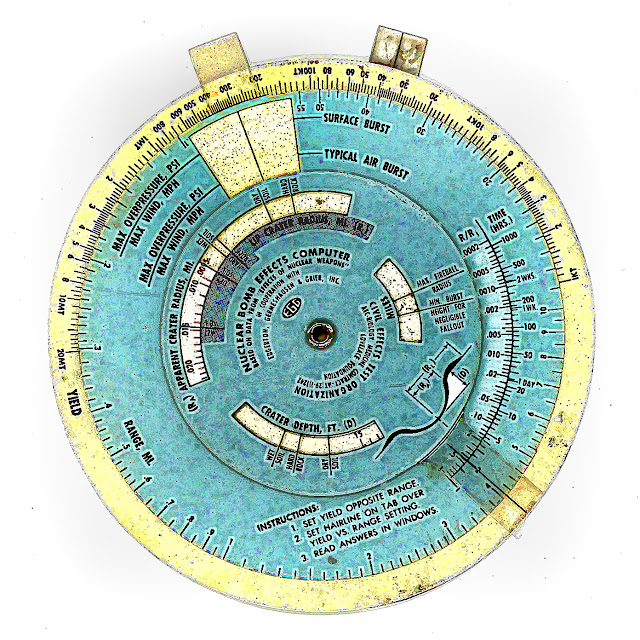
|
| Nuclear Bomb Effects Computer - Front |

|
| Nuclear Bomb Effects Computer - Rear |
These devices turn up regularly on eBay, although they can be a bit pricey. You can always Build Your Own Nuclear Bomb Effects Computer for a pittance.
The gadget found its way into the movies in the 1964 film Dr. Strangelove or: How I Learned to Stop Worrying and Love the Bomb.
Saturday, July 2, 2016
1947-11-07 - "Baby Boy Case"
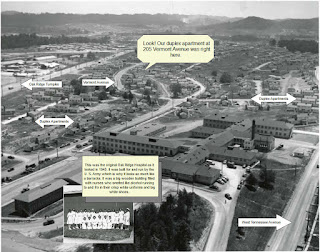 |
| Oak Ridge Hospital circa 1945. Photograph by Ed Westcott. |
I was born at a very early age on November 7, 1947, in the maternity ward of the Oak Ridge Hospital, Oak Ridge, Tennessee.
Oak Ridge is sometimes called the "Secret City". There are many reasons for this which I will tell you about in the future, when we are both older and wiser. For now though I just want to tell you about my birth. Not because it was so remarkable, but because it seems like a good place to begin. The stories I will tell you will not all be about me. But my story is the story I know best so we might as well start there.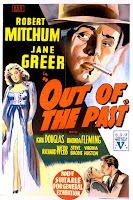 |
| 1947 "film noir" movie poster. |
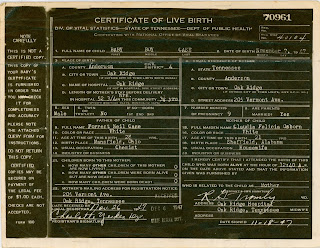 |
| Exhibit "A" |
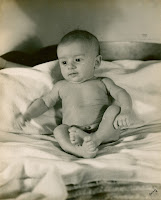 |
| "Baby Boy Case" |
 |
| Claudy, er, uh, I mean, "Claudia" F. Osborn. |
The photo was taken in the living room of a duplex at 205 Vermont Avenue, Oak Ridge, Tennessee. That is where I lived for the first three years of my life. I don't remember much about those years so they must have been pretty uneventful...at least for me. Incredibly I do remember two things from those years which I will tell you about in a later post. I will also tell you more about my mom and dad. But you can already learn a few things about them by taking a close look at the birth certificate. Let's see how well you do. Here is a quiz:
- What did the "F" in my mother's name stand for?
- What color or race was she?
- Where was she born?
- What was her usual occupation?
- How many months had my mom been pregnant when I was born?
- What does the birth certificate say about my dad?
One more task for you...find "Vermont Ave., Oak Ridge, Tennessee" on a google map. Our duplex at 205 Vermont Ave is not there anymore. In fact almost all of the duplex apartments in that part of town are gone now. If you look closely at the picture of the hospital you can see that at one time there were them. Our duplex was right across the street from the present day Family Clinic of Oak Ridge and just a couple of blocks from the hospital. As you can see, I was born very close to my first home.
Thursday, June 1, 2000
The Letter
As I have described in earlier posts, one of my great joys in life was rummaging through the closets, cabinets, and drawers at Grandmother's house in search of old photos, letters, curiosities, and other family treasures. It was on one such exercise in bedroom archeology that I unearthed one letter in particular that caught my eye. It was from Dad, addressed to his parents, and begins like this:
"Dear Mom and Dad,
Now I can explain what all the secrecy has been about the last few months. His name is Davy and he was born on November 7th. His mother's name is Claudia."
I was surprised to see that the letter was about Mom and I. But why the secrecy? Puzzled, I keep reading until I come to this line:
"I fear that she is not long for this world, as she has had heavy exposure...".
At once my attention shifts from the "secrecy" part to Mom. I was just a kid, true, but I was an Oak Ridge kid. I knew what the troubling phrase "heavy exposure" meant. I remember what went through my mind as I stared at the letter in my hands:
I'm worried.
Is Mom going to be ok?
Maybe Dad is wrong.
Mom is fine.
She has always been fine.
The letter is from a long time ago, ten years or more.
Yeah, Mom is fine.
Dad was wrong.
I did not mention the letter to anyone. I did not want anyone to know that I had read a secret letter.
I found the letter in the early 1960s. I was in my early teens. Mom was in her early thirties.
~~~
Less than ten years later Mom is not fine anymore. Uterine cancer is trying to kill her. Doctors intervene. Surgeons remove the affected tissue with an abdominal hysterectomy. Radiation therapy appears to stop the cancer from spreading. Mom lives cancer-free for thirteen more years.
~~~
In the fall of 1979, a new cancer appears. It is swift, aggressive, and lethal. This time the cancer wins. Mom is fifty-three years old when she dies.
~~~
Mom's dad died at age 71. Her mother died at age 87. Of her nine brothers and sisters, five died in the eighties, three died in their seventies, and one died at age 59. Of her four grandparents, two died in their eighties, one died in her seventies, and one died at age 61. Mom's death at age fifty-three was not typical for her family.
In the days surrounding her illness and death I wondered why she was taken from us so young. I remembered Dad's letter. Was he right? Was Mom's cancer related to her work at Y-12? I did not bring up the secret letter. Doing so would not bring Mom back. I let it go. With time I forgot it completely.
Wednesday, May 31, 2000
The Cellar
The cellar is the space I spent the least amount of time in for several reasons. First off, the cellar was very dark. Especially when the lights were off. Secondly, the steps going down into the cellar had a handrail along the wall, but not along the open side. At least that is how I remember it. I could be wrong about that. Nevertheless, for that reason or another the steps were deemed a bit precarious. Everybody who was older than me, which was everybody, advised me to take much care when descending the steps, but really preferred that I not go there at all. Of course, from my perspective, that was all the more reason to go there.
Turning on the light switch helped the visibility situation, but only a little. Peering down into the murk of the dimly lit cellar from the top of the steps left me with a certain sense of awe, foreboding, and curiosity. I was pretty sure that somewhere down there among the lumps of coal and the many shelves of empty mason jars there was treasure to be found. With a firm grip on the handrail with my left hand, and uncle Wendell's flashlight in my right hand, I began my descent. Upon reaching the bottom, but before stepping away from the security of the steps, I traversed the flashlight from left to right, and back again. I discerned various objects and spaces that with out the help of the flashlight had been invisible from the top of the steps.
It was a strange world, and an odoriferous one at that. Not stinky mind you, but different, odd, unlike the smell of the world above. It was a mixture of mold, coal dust, and just plain old age. In other words, it smelled of adventure. Cautiously I stepped away from the steps onto the cellar floor which crunched beneath my sneakers, the result of eighty years of grit and insect exoskeleton accumulation.
I moved towards a bit of light coming from the narrow spaces around the outside cellar doors. I tried to imagine what it would be like down here during a tornado like the one that carried Dorothy away in the Wizard of Oz. Mom had told me about tornados in Alabama and they sounded really scary. I wondered if they had tornados in Ohio too*. I pushed on the doors to see how sturdy they were. I concluded that they would blow away like the leaves from the big tree in the back yard, letting me or anyone else down here to be sucked out by a big tornado like bug beneath a Hoover. I moved on.
Holding the flashlight at the ready like a club in case any critter hiding in some dark corner should suddenly jump out at me, I slowly circumnavigated the perimeter of the "cave". Of the gazillions of Mason Jars, none had anything in them but dust and spider webs. You would think that at one or two of them would have contained a treasure map, a secret message, or at least some explosive powder**. Ultimately the only object of any real interest was the coal furnace. Since it was summer, it wasn't running. But I remembered hearing its comforting rumble in the winter months as warm air came up through the floor vents in the parlor. I had never seen it up close before. It reminded me of a dirty, rusty, alien robot. Uncle Wendell's shovel was nearby next to a pile of coal. On really cold winter nights Wendell would have to crawl out of his bed on the second floor, make his way to the cellar, a shovel more coal into the gaping mouth of the beast while the rest of us snuggled deeper into our warm wool blankets. He deserved some kind of medal for that.
I have never forgotten my few explorations of the cellar and the mason jars, the furnace, and the pile of coal. Most of all, I can never think about the cellar without thinking about Wendell.
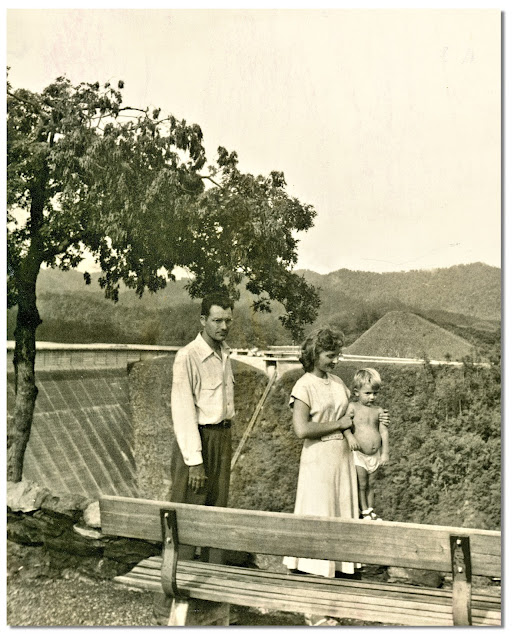
|
| Ernest Wendell Case, Claudia Osborn Case, William David Case, circa 1948. Norris Dam in the background. |
*In 1965, nine years after I pondered these matters, Mansfield was hit by a large tornado causing 30 injuries and 4 deaths.
**Not entirely a random thought with no basis for bubbling up from the depths of my eight year old subconscious. I was well aware after all, of my uncles' post adolescent fondness for explosives and Wendell's catastrophic accident.





